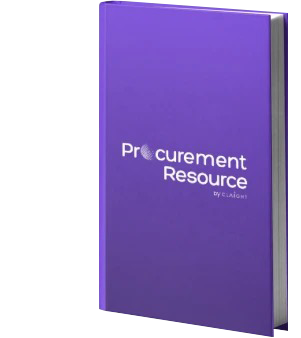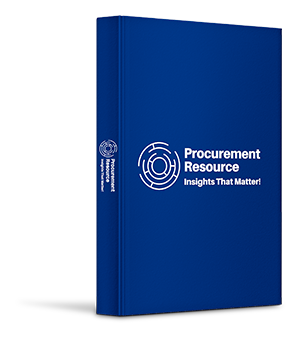Reports

Global Carbon Steel Market: by Sector; Country Overview; Value Chain Analysis; Production Process; Trade Analysis; Cost Structure; Market Dynamics: Drivers & Constraints, Industry Events, Innovations & Trends, SWOT Analysis, Porter’s Five Forces; Industry Best Practices: Sourcing Strategy, Procurement Model, Contract Structure, Negotiation Levers, Pricing Model; Key Supplier Analysis, 2024-2032
Carbon Steel Industry Report by Regional Category Spend, Price Analysis, Key Demand, and Price Indicators, and Best Buying Practices
The global Carbon Steel market reached a volume of about 1917.60 MMT in 2021. The industry is projected to grow at a CAGR of around 2% in the forecast period of 2022-2027 to reach a volume of about 2159.53 MMT by 2027.
The global Carbon Steel industry report gives a comprehensive analysis of the industry, including key segments, trends, drivers, restraints, the competitive landscape, and other essential market aspects. The industry is being driven by the material's use in various infrastructure applications, including frame materials, pipelines, fences, gates, and structural components. Low carbon steel is commonly used in fence construction, whereas mild and medium carbon steel is utilised in bridge and building structure construction, propelling the market growth. In the industry report, the key demand indicator is the highest category spender by region—Asia.
Industry Definition and Segmentation
Carbon steel is a type of steel that consists of an iron and carbon alloy. Carbon steel can also refer to steel that isn't stainless steel; it has a more extensive carbon content, a lower melting point, and is more durable. Carbon steel is the extremely widespread engineering and construction raw material for large-scale industrial uses, such as maritime constructions, power plants, transportation, chemical processing, and petroleum extraction and refining. The Carbon Steel industry report comprises segments by sector (Construction, Mechanical Equipment, Automotive, Electrical Equipment, Domestic Appliances) and region (North America, Europe, Asia Pacific, the Middle East, Africa, and South America).
The Asia Pacific Region is Driving the Growth of the Industry
The Asia Pacific region holds the largest share of the market due to the increasing usage of carbon steel in constructing bridges, fences, and buildings throughout the region. Carbon steel is being more widely used in end-use sectors such as building, aviation, and automobiles. To enhance general economic growth, nations such as India, China, and Southeast Asia allocate a considerable amount of their budget to infrastructure development. Furthermore, the rise of the shipbuilding industry is likely to further the market growth.
The industry is primarily driven by the material's extensive application in the construction industry. Carbon steel is used in a wide range of goods, including flat-rolled sheets, structural steels, pipelines, pressure vessels, and the broad spectrum. The demand for high-strength and cost-effective construction materials such as carbon steel is growing as smart cities, tech parks, shopping malls, and other public infrastructures such as hospitals, auditoriums, and schools are being built. As a result, the global carbon steel market is expanding. The governments of developing countries are legislating and executing infrastructure development plans and initiatives. The government is continually investing in research and development initiatives for infrastructure development. For the sake of economic growth, the government funds infrastructure development endeavours. These developments enhance the market's demand for carbon steel. As a consequence of the increased focus on infrastructure development, the carbon steel market is expected to grow healthy over the projected period.
However, fluctuations in the price of lightweight materials in automobiles and expensive MRO (maintenance, repair, and overhaul) facilities for carbon steel items are likely to hamper the industry's expansion.
Best Procurement Practices
The global Carbon Steel industry report by Procurement Resource gives an in-depth analysis of the best buying practices followed by major global Carbon Steel regions, such as engagement models, contract terms, and buyer and supplier negotiation levers.
Category Management Studies
Carbon steel is made from recycled or virgin steel or a mix of the two. Iron ore, coke (formed by burning coal in the absence of air), and lime are combined in a blast furnace at roughly 1650 °C to generate virgin steel. The carbon from the burning coke is added to the molten iron recovered from the iron ore. Slag is formed when the residual impurities mix with the lime and float on top of the molten metal, where it can be collected. The molten steel has a carbon content of around 4% by weight. In a process known as decarburisation, the carbon content is subsequently lowered to the required level. This is accomplished by introducing oxygen into the melt, which oxidises the carbon in the steel, resulting in carbon monoxide and carbon dioxide.
The Metal's Employment in Other Industries, Further Augmenting the Procurement of Carbon Steel
The industry is being propelled by the use of metal in other sectors. Medium carbon steel is employed in the automobile sector since it has more strength and endurance than low carbon steel while having fewer ductile qualities. Carbon steel is used in the automotive industry is likely to rise as the focus shifts to lighter automobiles. Low carbon steels are used in vehicle body components, structural forms such as angle iron and I-beams, pipelines, building and bridge components, and food cans. Medium-carbon steels are extensively used for high-strength, wear-resistant railway rails, train wheels, and equipment parts. It is also used in shipbuilding because of its mechanical characteristics and affordable price. The increased usage of lightweight manufactured composites for next-generation aircraft and growing environmental concerns offer considerable growth potential for the carbon steel industry. In addition, the growth of the aerospace sector in recent years and a rise in space expeditions are expected to raise carbon steel demand.
The regional markets for the industry can be divided into Europe, North America, the Asia Pacific, South America, and the Middle East and Africa.
Key Industry Players Mentioned in the Carbon Steel Industry Report
- ArcelorMittal S.A.
- Hesteel Group Company Limited
- Nippon Steel Corporation
- POSCO
- United States Steel Corporation
Market Landscape
The market is somewhat fragmented, with various local players present. These market players use multiple marketing techniques to increase their market share, including new product launches, investments, alliances, and mergers and acquisitions. Businesses are also investing in the creation of better products. Furthermore, they are concentrating on cost-effective pricing.
Key Initiatives by Companies
- Nippon Steel Corporation purchased Koppers Carbon Chemical Company Ltd in February 2020. (KJCC).
- Nippon Steel has divided its energy conservation and CO2 emissions reduction strategy into Action Plan phases to achieve a low-carbon footprint. Several projects that implement sustainable manufacturing practices will boost steel production using environmentally friendly methods.
1. Executive Summary
2. Global Carbon Steel Market Snapshot
2.1. Carbon Steel Market Outlook
2.2. Carbon Steel Industry Analysis by Sector
2.2.1. Construction
2.2.2. Mechanical Equipment
2.2.3. Automotive
2.2.4. Electrical Equipment
2.2.5. Domestic Appliances
2.3. Regional Overview
2.3.1. North America
2.3.2. Europe
2.3.3. Asia Pacific
2.3.4. Latin America
2.3.5. MEA
3. Impact of Recent Events
4. Carbon Steel Value Chain Analysis
5. Carbon Steel Production Process
6. Trade Analysis
7. Major Risk Factors in Sourcing
8. Carbon Steel Cost Structure
9. Carbon Steel Price Analysis
10. Key Demand Indicator Analysis
11. Key Price Indicator Analysis
12. Carbon Steel Market Dynamics
12.1. Drivers & Constraints
12.2. Industry Events
12.3. Innovations & Trends
12.4. SWOT Analysis
12.5. Porter’s Five Forces
12.5.1. Buyer Power
12.5.2. Supplier Power
12.5.3. Threat of New entrants
12.5.4. Threat of Substitutes
12.5.5. Industry Rivalry
13. Industry Best Practices
13.1. Sourcing Strategy
13.2. Procurement Model
13.3. Contract Structure
13.4. Negotiation Levers
13.5. Pricing Model
13.6. Key Factors Influencing the Quotation
14. Key Supplier Analysis
14.1. ArcelorMittal S.A.
14.2. Hesteel Group Company Limited
14.3. Nippon Steel Corporation
14.4. POSCO
14.5. United States Steel Corporation
The global Carbon Steel market size reached a volume of 1917.60 MMT in 2021.
As per the sector provided, the Construction segment is anticipated to lead the market between the period 2022 – 2027.
The significant demand for metal in the construction industry is one of the essential drivers of the Carbon Steel market growth.
ArcelorMittal, Hesteel Group, Nippon Steel and Sumitomo Metal Corporation, POSCO, and United States Steel Corp are some of the primary companies in the market.
The Asia region of the Carbon Steel industry holds a significant share in the market.
The global Carbon Steel market attained a volume of 1917.60 MMT in 2021, driven by the rising demand for the metal from the construction industry. It is employed in manufacturing flat-rolled sheets, structural steels, and pipelines, among others driving the industry's expansion. Furthermore, the growing government initiatives in the industrial sector are furthering the market's growth. Aided by the extensive application of the product in other industries like automobiles, aerospace, etc., the market is expected to witness further growth in the forecast period of 2022-2027, growing at a CAGR of 2%. The market is projected to reach 2159.53 MMT by 2027.
Procurement Resources' detailed research approach explores deep into the industry, encompassing the macro and micro aspects of the industry. Its team of experts uses cutting-edge analytical tools and their expertise, thus, delivering its customers with market insights that are accurate, actionable and help them remain ahead of their competition. Some of the leading players in the industry are ArcelorMittal, Hesteel Group, Nippon Steel and Sumitomo Metal Corporation, POSCO, United States Steel Corp.
Compare test & Choose the Right Report Version for You
RIGHT PEOPLE
At Procurement Resource our analysts are selected after they are assessed thoroughly on having required qualities so that they can work effectively and productively and are able to execute projects based on the expectations shared by our clients. Our team is hence, technically exceptional, strategic, pragmatic, well experienced and competent.
RIGHT METHODOLOGY
We understand the cruciality of high-quality assessments that are important for our clients to take timely decisions and plan strategically. We have been continuously upgrading our tools and resources over the past years to become useful partners for our clientele. Our research methods are supported by most recent technology, our trusted and verified databases that are modified as per the needs help us serve our clients effectively every time and puts them ahead of their competitors.
RIGHT PRICE
Our team provides a detailed, high quality and deeply researched evaluations in competitive prices, that are unmatchable, and demonstrates our understanding of our client’s resource composition. These reports support our clientele make important procurement and supply chains choices that further helps them to place themselves ahead of their counterparts. We also offer attractive discounts or rebates on our forth coming reports.
RIGHT SUPPORT
Our vision is to enable our clients with superior quality market assessment and actionable evaluations to assist them with taking timely and right decisions. We are always ready to deliver our clients with maximum results by delivering them with customised suggestions to meet their exact needs within the specified timeline and help them understand the market dynamics in a better way.
Email Delivery Price: $ 999.00
The global nutmeg market reached a value of about 134 thousand tonnes in 2021. The industry is further expected to grow at a CAGR of about 4.5% in the forecast period of 2022-2027 to reach a value of around 167 thousand tonnes by 2027.
Read MoreEmail Delivery Price: $ 999.00
The global Artificial Intelligence Market reached a value of about USD 192 Billion in 2021. The industry is projected to grow at a CAGR of around 23% in the forecast period of 2022-2027 to reach a value of about USD 664.86 Billion by 2027.
Read MoreEmail Delivery Price: $ 999.00
The global HEOR market reached a value of about USD 1364.3 million in 2021. The industry is further expected to grow at a CAGR of about 12.81% in the forecast period of 2022-2027 to reach a value of around USD 2779.2 million by 2027.
Read More
